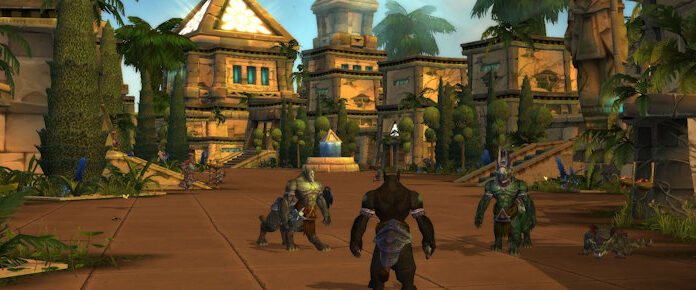
Your mileage may vary, but as both a journalist and a gamer, I absolutely love hearing about how my favorite titles were made. It makes me appreciate them more, especially elements that I’ve taken for granted, and it often renews my interest in that game.
Lord of the Rings Online players have enjoyed a couple of years of such behind-the-scenes information. This is thanks to Senior Worldbuilder Matt “Scenario” Elliot, who’s been taking players on a weekly “Casual Stroll” video series to talk about the actual making of the landscape. After watching the first five videos, I wanted to pass along 23 facts that I learned about our favorite MMORPG from this series.
1. The Shire originally would have been host to darker stories and a higher concentration of goblins, but the devs thought that was too much for the calm zone and backed off.
2. The ceilings in Shire structures are “three times” or so as high as a Hobbit — which is weird when you think about it! This was to keep the camera from bumping into the ceiling while taller characters visited.
3. Lord of the Rings Online’s game engine dates all the way back to Asheron’s Call. This engine saw many iterations through Asheron’s Call 2, Infinite Crisis, DDO, and LOTRO.
4. Thorin’s Hall used to dismount players approaching the basement tavern. The devs changed that as it was too annoying for everyone trying to ride down there for festivals.
5. One of his biggest regrets at launch was not connecting the Shire to Ered Luin. (Thank goodness for the recent Yondershire!)
6. There is a tree in southern Ered Luin with a heart and the initials of a developer carved into it.
7. Ered Luin was one of the zones created back when the game was Middle-earth Online, although it was filled with different content later on.
8. The devs created some early enemy camps “complex for complexity’s sake” with loads of invisible tripwires that would summon all sorts of mobs.
9. Why did Dwarves and Elves have to share an intro zone? “Scheduling and timing,” referring to the team trying to hit the launch date on time.
10. Archet’s different phases during the tutorial experience were considered quite advanced tech back in the day.
11. Bree’s been subtly expanded and opened up over the past several years. One of the ideas for this was to create space for a possible player neighborhood, if the devs ever decided to pull the trigger on it.
12. The devs do a “massive, massive” amount of research on regions before the world builders go at them. This research includes scouring the Tolkien Legendarium and contemporary regions in our world for examples of foliage and landscape.
13. The trees far away on the horizon are just 2-D illusions to fill in the visual space, to be replaced with 3-D models when you draw nearer. A lot of that far away sculpted terrain exists in “far view” only so that you get a sense of the world when you’re looking out from high places (versus just seeing blank fields).
14. The game client is constantly unloading landscape/mob assets as you get further away from them and loading new ones as you approach. Think of a giant bubble around your character that makes up the totality of the game world that actually exists for your character at any given time.
15. Most monster camps are designed with multiple entrances/exits to avoid making players having to fight both ways.
16. Early on, when the team was working on land expansions, they called it “Project K” for “koala.” Because… it’s koality. That makes sense? Sure.
17. The current version of Weathertop — and its associated instance — are almost unrecognizable from the version that launched thanks to all of the changes over the years.
18. The Forsaken Inn was one of the team’s first tests of having an interior space that was open to the sky.
19. Lone-lands was the first big usage of ruins as a “playground” for the developers.
20. Up through Angmar, the developers made a concerted effort to change the environment in certain areas to emphasize an evil place. The team called it “the evilification of Eriador.” The devs have since moved away from doing that but still use weather effects for specific spots.
21. Middle-earth Online’s landscape was more wild, expansive, and barren, but with the development switch to LOTRO, the team focused on more “intimate, hand-crafted” regions.
22. When a new day begins, the system rolls a random check to pick a different weather pattern for that day. (Daytime in the game is 1 hour and 42 minutes, while nighttime is 1 hour and 23 minutes of real time.) “There’s a lot of randomness there.”
23. The phasing tech that LOTRO uses is tricky for the team because it can’t affect the physics of the landscape as the phases progress.
 Every two weeks, the LOTRO Legendarium goes on an adventure (horrid things, those) through the wondrous, terrifying, inspiring, and, well, legendary online world of Middle-earth. Justin has been playing LOTRO since its launch in 2007! If you have a topic for the column, send it to him at justin@massivelyop.com.
Every two weeks, the LOTRO Legendarium goes on an adventure (horrid things, those) through the wondrous, terrifying, inspiring, and, well, legendary online world of Middle-earth. Justin has been playing LOTRO since its launch in 2007! If you have a topic for the column, send it to him at justin@massivelyop.com.

















